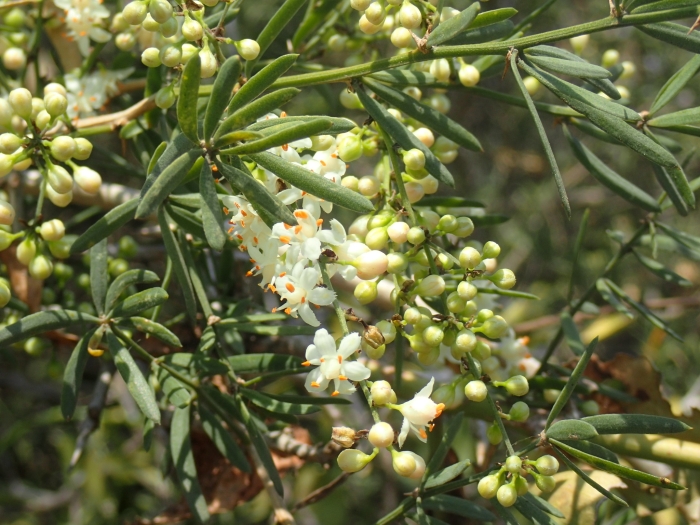Sicklethorn
(Asparagus falcatus)
Sicklethorn (Asparagus falcatus)
/
/

Mahomed Desai
CC BY 4.0
Image By:
Mahomed Desai
Recorded By:
Copyright:
CC BY 4.0
Copyright Notice:
Photo by: Mahomed Desai | License Type: CC BY 4.0 | License URL: http://creativecommons.org/licenses/by/4.0/ | Rights Holder: Mahomed Desai | Publisher: iNaturalist | Date Created: 2023-10-07T11:37:50-07:00 |

























Estimated Native Range
Summary
Asparagus falcatus, commonly known as sicklethorn or large forest asparagus, is a vigorous, evergreen climbing plant native to the coastal forests and woodland margins of South Africa and Eastern Africa. It can grow up to 23 feet (7 meters) high, with long, arching stems covered in sharp thorns. The leaves are actually leaf-like cladodes, which are modified stems that resemble leaves, and are dark green and curved. Sicklethorn produces clusters of fragrant white flowers during the summer months, which are quite showy and attract pollinators. These are followed by bright red berries that are attractive to birds but are not edible for humans.
Sicklethorn is valued for its rapid growth and dense foliage, making it an effective security hedge due to its thorny nature. It is also used for ornamental purposes in large gardens or as a screen plant. In cultivation, it prefers shady to partially sunny locations with moist, well-drained soil. While it can tolerate a range of soil types, it thrives in rich, loamy soils. Regular watering is important, especially during dry periods. It is relatively low maintenance but may require pruning to control its spread and to maintain the desired shape.CC BY-SA 4.0
Sicklethorn is valued for its rapid growth and dense foliage, making it an effective security hedge due to its thorny nature. It is also used for ornamental purposes in large gardens or as a screen plant. In cultivation, it prefers shady to partially sunny locations with moist, well-drained soil. While it can tolerate a range of soil types, it thrives in rich, loamy soils. Regular watering is important, especially during dry periods. It is relatively low maintenance but may require pruning to control its spread and to maintain the desired shape.CC BY-SA 4.0
Plant Description
- Plant Type: Herb, Vine
- Height: 10-20 feet
- Width: 3-6 feet
- Growth Rate: Moderate
- Flower Color: White
- Flowering Season: Fall
- Leaf Retention: Evergreen
Growth Requirements
- Sun: Part Shade, Full Shade
- Water: Medium
- Drainage: Medium, Fast
Common Uses
Border Plant, Potted Plant
Natural Habitat
native to the coastal forests and woodland margins of South Africa and Eastern Africa
Other Names
Common Names: Sickle Thorn, Large Forest Asparagus, Aspargo, Wild Asparagus
Scientific Names: , Asparagus falcatus, Asparagus aethiopicus var. ternifolius, Asparagus falcatus, Asparagus falcatus var. falcatus, Asparagus falcatus var. ternifolius, Protasparagus falcatus,
GBIF Accepted Name: